Usha Nangiar’s efforts have spurred a movement for inclusivity in Koodiyattam, challenging traditions and promoting women’s roles. The recent Panchakanya Mahostsav highlights this progress.
The five-day Panchakanya Rangavatharana Mahotsav held recently in Thrissur was a landmark event in the history of Koodiyattam. Organised by Usha Nangiar, the prima ballerina of Nangiarkoothu, the festival hogged much media attention thanks to the sterling performances, seminars, lecture-demonstrations, paper presentations et al.
It may be remembered that in the age-old Sanskrit theatre of Koodiyattam female characters have been portrayed by only women, mainly Nangiars, unlike in Kathakali. While this could be attributed to be in conformity with the tenets of Sanskrit theatre at the pan Indian level, the importance given to women could also be peculiar to Kerala where women enjoyed a status on a par with that of men.
But strangely enough, one wonders why most of the female characters in the Sanskrit plays selected for Koodiyattam have been omitted employing certain techniques like kettaduka over the years. While this could be explained as a reflection of the patriarchal mindset of the Chakyars, the architects of the theatre form, practical hazards in including women in the entourage arising out of social conditions were also a factor. Still, there have been sporadic attempts by exponents like Painkulam Rama Chakyar and Ammannur Madhava Chakyar to present female characters, though their roles were short. Perhaps, this was during the last fifty years considered to be a revival period of Koodiyattam.
Revival attempts in Nangiarkoothu
The credit for raising voice against gender discrimination in Koodiyattam goes to Usha Nangiar, a disciple of Ammannur Madhava Chakyar. What had emboldened her was the revival of Nangiarkooth during the 1980s at the Ammannur Gurukulam while she was a student there for more than fifteen years. Moreover, she was the artist who had the privilege of being the subject of these experimentations. Ever since its resurgence, Nangiarkooth attained wide acclaim so much so that the number of performers of the same swelled with additions from other institutions including Kerala Kalamandalam, Margi etc. Usha’s protest manifested finally through her book, Abhinetri, published in 2003.
In this historic documentation, Usha Nangiar took strong exception to the prevaricating explanation advanced by the elders for avoiding the panchakanyas (Ahalya, Tara, Droupati, Sita and Mandodari) on the Koodiyattam stages. The alibi advanced by them was always, “That is the convention”. But Usha was not prepared to take this lying down. She attempted a serious study of these noble characters, which is praiseworthy. Incidentally, panchakanyas is a group of five iconic women of the Hindu epics, extolled in a hymn and whose names are believed to dispel sin when recited.
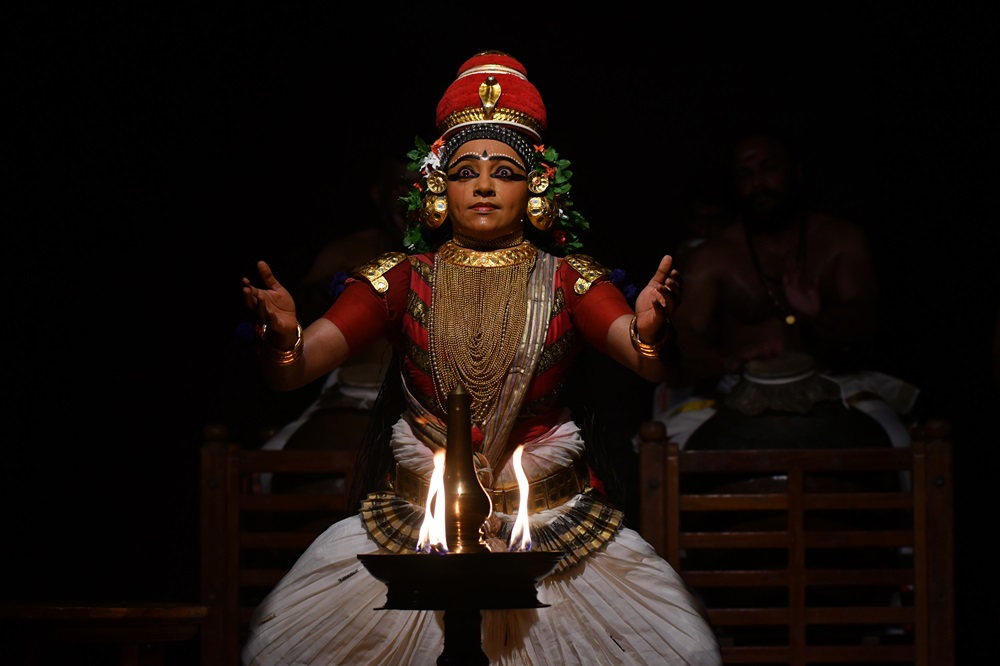
True that the few plays currently in vogue embrace only very few women characters. But their scope for elaboration appears to be deliberately cut down. Usha substantiated her view by citing the roles of Lailtha in the Acts of Parnasaalangam and Soorpanakagam in Ascharyachoodamani, Subhadra and her sakhis in the second Act of Subhadradhanajjayam, Tapati and her sakhis in Tapatisamvaranam, Malayavati and her sakhis in Naganandam and also the purappad (entry) of Gouri and Karthyaayani.
Availability of kramadeepika (production manual) for the presentation of their roles that were enacted by outstanding Nangiars of yore is proof enough that the roles were sidelined only in the recent past. What had inspired her further to address this issue was the book “Women’s Role in Koodiyattam” authoured by L S Rajagopalan in 1997, a prolific writer on Koodiyattam.
Celebrating women charecters
Over the years, Usha Nangiar had been successful in choreographing many female character. Among them Subhadra’s purappad in Act V of Subhadradhanajjayam staged in 2001 was revived after 40 years. Menaka of Tapatisamvaranam, Mandodari in Asokavanikangam etc were others. Perhaps the most historic was Karthyani’s purappad in Act V of Subhadradhanajjayam in 2004.
‘Purappad’ of such a dignified character has been conspicuous by its absence on the Koodiyattam stages all these years. While inaugurating the presentation, late L S Rajagopalan, an expert in traditional theatre forms, had observed, “There is no evidence that this had been staged over the past 100 years”.
However, old timers used to mention the elaborate arrangements for this feat. The Nangiar portraying the Bhagavathy used to circumambulate the temple atop an elephant, perched on one leg, to the accompaniment of percussion ensemble, kuthu vilakku and other paraphernalia, before entering the greenroom. Presence of five female characters on the stage in the show seemed a fitting answer to the male domination rampant in Koodiyattam.
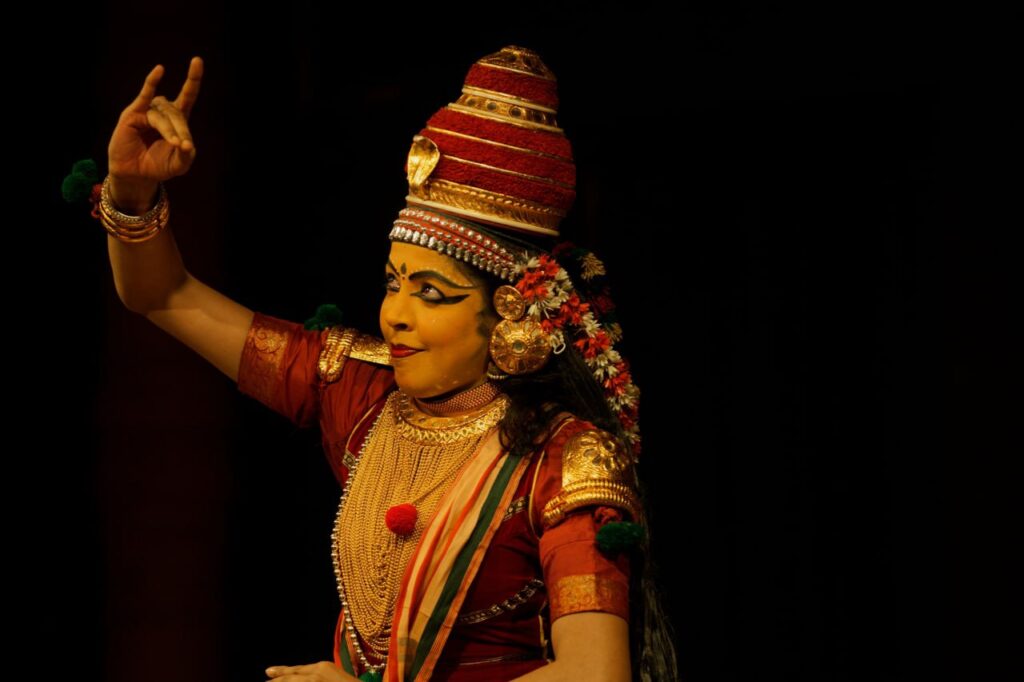
As for the festival under review, Ahalya, Sita and Droupati were staged by Usha herself while Tara and Mandodari, by her disciples Aparna Nangiar and Kapila Venu respectively.
Choreographed by Usha strictly on the format of samkshepam, slokam and anhinaya of Nangiarkoothu, Ahalya was modeled on the nirvahana of Sita in Uthara Ramacharitam, in the absence of any other source. For Mandoari, Act V of Asharyachoodamani, Droupadi, Venee samharam Act I, Tara, Mayurajan’s Udatha Raghavam and Sita based on Kumaranassan’s Chintavishtayaya Sita.
Praiseworthy were the five performances that were noted for creativity and innovations. Pakarnattam (multiple character presentation) was at its best. Coupled with ecstatic drumming from the mizhavus and edakka, the emotive expressions of the characters soared to dizzy heights.
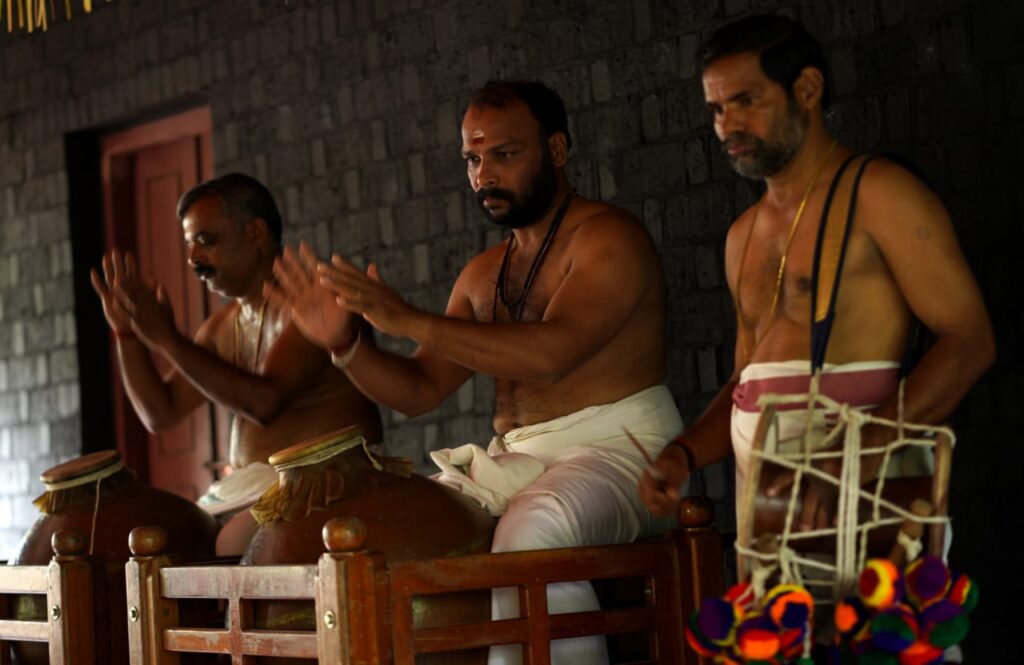
The group of percussionists included Kalamandalam Rajeev, Kalamandalam Hariharan, Kalamandalam Narayanan Nambiar, Kalamandalam Vinish, Kalamandalam Vijay and Kalamandalam Rahul (mizhavu) and Kalanilayam Unnikrishnan (edakka). The tonal variations arising from Rajeev’s mizhavu in support of abhinaya deserved special mention. Saritha Krishnakumar, Athira Hariharan and Gurukulam Sruti kept talam in turn. Lighting by Sivan Venkitangu was commendable.
The Kerala Sangeetha Nataka Akademi Black Box was packed to its capacity on all days by an audience among whom youngsters formed a majority. This seemed unprecedented in the Koodiyattam shows.
A book explaining the meaning of slokas in Sreekrishnacharitam, the root of Nangiarkooth, authoured by Usha was released in the festival by Dr K G Paulose. Also the 75-hour documentation of Sreekrishnacharitam by Krishnan Nambiar Mizhavu Kalari was screened.

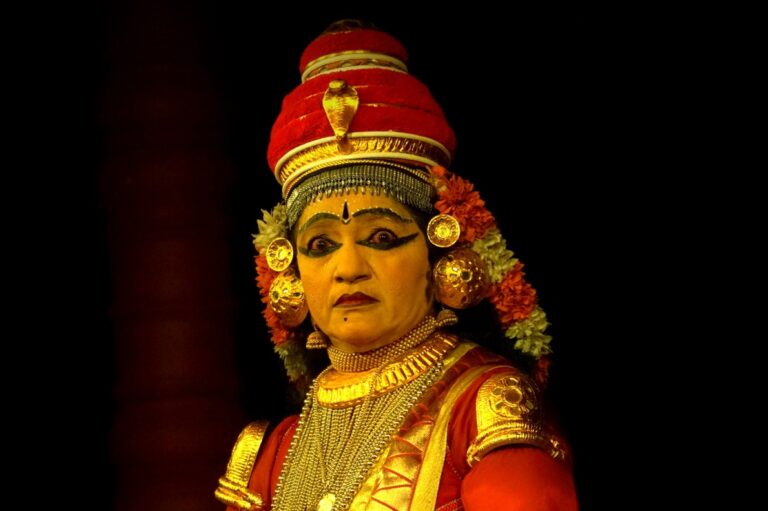
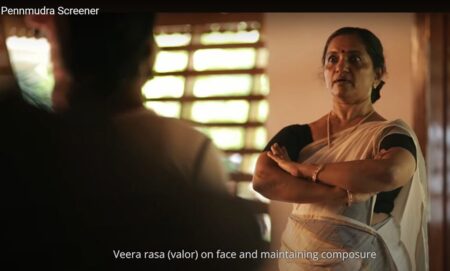
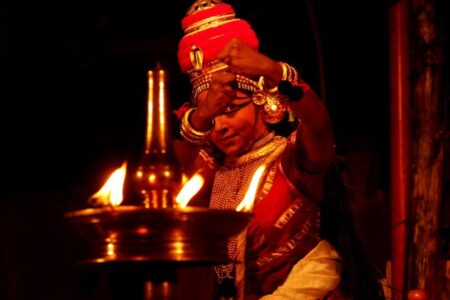
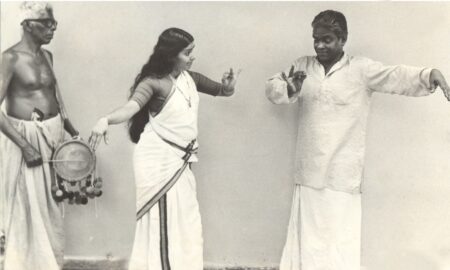
1 Comment
Excellent article, doing full justice to the great standard set by the five day performances. I was pleasantly surprised by the huge presence of youngsters in the audience: students, researchers and few first timers who sat engrossed till the end. The discussions were rich with content and innovative in views.